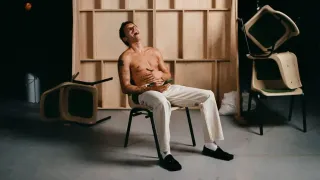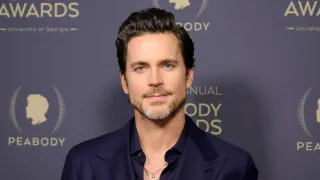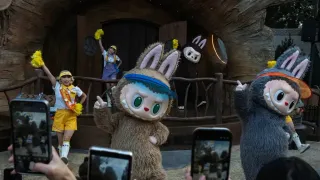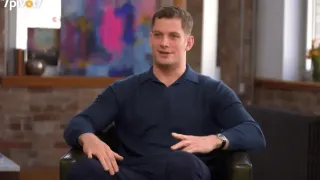August 12, 2024
EDGE Interview: 'Drag Race' Alum Dusty Ray Bottoms Explains Surviving Conversion Therapy in New Doc
Steve Duffy READ TIME: 10 MIN.
After coming out to his conservative Christian parents, singer and "Drag Race" drag queen Dusty Ray Bottoms – real name Dustin Rayburn – found himself being subjected to so-called "conversion therapy," a quack practice that purports to change or "convert" LGBTQ+ people into cisgender and/or heterosexual people.
Needless to say, the "therapy" – which included an attempted exorcism in search of a "gay demon" to cast out of him – did nothing to change Rayburn's innate and natural sexuality. Being a survivor, and possessing talent and drive, Bottoms chose to fulfill himself instead, successfully auditioning for Season 10 of "RuPaul's Drag Race."
Though Bottoms was eliminated from the show, he left a lasting impression after sharing the story of his conversion therapy experience on the air. It was a moment that filmmaker Zach Meiners happened to see while at a gay bar in Louisville, Kentucky – a hometown that both he and Bottoms happen to share. The two men had survivorship of "conversion therapy" in common as well, and when Meiners contacted him about appearing in a documentary about the pseudoscientific practice, Bottoms agreed.
"Crazy that he was sitting in a bar in Louisville, where we are both from and watching me on 'Drag Race'!" Bottoms tells EDGE. "That was the first time he heard anyone talk about it on TV."
Bottoms explains that Meiners had gotten the idea to make some sort of film when, in his 20s, he found out that the "conversion" therapist he had worked with was still in the business.
"Someone close to him was going to see [that therapist]," Bottoms says, "so he felt like he needed to make a PSA or do something so that Kentuckians could know the dangers of conversion therapy."
That "PSA" grew into a full-fledged documentary film in which Bottoms has a significant presence.
"He reached out to me," Bottoms recollects. "I happened to be headlining Pride in Louisville that year. I flew home and did Pride, and the next day, I was in the studio with glitter still on my face, telling my story."
Meiners, too, appears in the film to share his own experiences. Bottoms' and Meiners' stories, along with the stories of others like Elena Joy Thurston – a former Mormon who endured the so-called therapy after she discovered feelings of same-sex attraction during her marriage to a man – and former "conversion therapy" practitioner McKrae Game, making for a powerful corrective narrative that shines a light on a practice that reputable health providers warn can be harmful to vulnerable people who have already been told they are "broken" and "wrong."
Read what else Dusty Ray Bottoms had to tell EDGE about his career path, his surviving "conversion therapy," and what he hopes his story will mean to queer youths and their parents.
EDGE: If possible, without giving too much away, please share your conversion story.
Dusty Ray Bottoms: When I was 20, I came out to my parents, and I grew up in a very religious Christian family. When that happened, there were some other layers and complexities to my story that I told my parents about. It was suggested that I could have been possessed by a gay demon, so we went to church and I went through an exorcism to get rid of it. To make me straight, I would have to go through some one-on-one counseling sessions with the pastors to make sure that I was on the straight path.
EDGE: When sharing your story on "Drag Race" and being part of this documentary, you created your path to activism – a path that one rarely takes. How has taking on this fight helped you?
Dusty Ray Bottoms: It was something I didn't expect to happen. I wanted to shine a light on what I've been through. Whenever I talked about conversion therapy to other people, I didn't know it was conversion therapy to begin with, because I didn't have that term for what I went through. I was just expressing this experience I had when I came out, and people would just look at me and give me an awkward smile and say, "Wow."
It wasn't until I shared my story on "Drag Race" that I heard I heard people say, "That happened to me, too," or, "My brother/friend has gone through this." That was a full-circle moment for me. It was incredibly healing, because it let me know I wasn't alone.
[Similarly], expressing my story on "Drag Race" let others know that they weren't alone. That in itself was huge. It has its ups and downs, because when you're talking about it there's a lot of traumas involved. There are times that you feel like you have moved far past the experience, and then when you're talking to others, and they're sharing their story, and sometimes old feelings get dug up. Then, you have a trigger moment and realize more work needs to be done.






